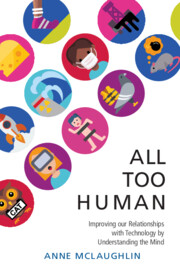Book contents
- All Too Human
- All Too Human
- Copyright page
- Contents
- Figures
- Tables
- Preface
- Acknowledgments
- Introduction
- 1 “Brace for Impact”
- 2 Bad Water
- 3 Hybrid Vigor
- 4 A Mind Divided
- 5 All the Light We Cannot See
- 6 Mistakes
- 7 History Repeating?
- 8 Needles in Haystacks
- 9 Apt Pupils and Alien Invaders
- 10 A Relative to Truth
- 11 Old Principles for New Worlds
- Conclusion
- Notes
- References
- Index
1 - “Brace for Impact”
Published online by Cambridge University Press: 27 January 2022
- All Too Human
- All Too Human
- Copyright page
- Contents
- Figures
- Tables
- Preface
- Acknowledgments
- Introduction
- 1 “Brace for Impact”
- 2 Bad Water
- 3 Hybrid Vigor
- 4 A Mind Divided
- 5 All the Light We Cannot See
- 6 Mistakes
- 7 History Repeating?
- 8 Needles in Haystacks
- 9 Apt Pupils and Alien Invaders
- 10 A Relative to Truth
- 11 Old Principles for New Worlds
- Conclusion
- Notes
- References
- Index
Summary
The opening drops the reader into the story of Captain "Sully" Sullenberger and Co-pilot Jeffrey Skiles as they take off on their fateful flight in February of 2009. What is likely a familiar story is given new life via quotes from the flight recordings interspersed with a vivid retelling of the scene and their lightning-fast decisions. The first section ends with a cliffhanger: Captain Sully’s famous words: “Brace for impact.” The remainder of the chapter is a journey through vivid examples of technology paired with human stories: from the effects on aviation safety after terrain detectors were mandated to the unexpected tragedies when the detectors "cried wolf" too often.
Information
- Type
- Chapter
- Information
- All Too HumanUnderstanding and Improving our Relationships with Technology, pp. 7 - 16Publisher: Cambridge University PressPrint publication year: 2022
